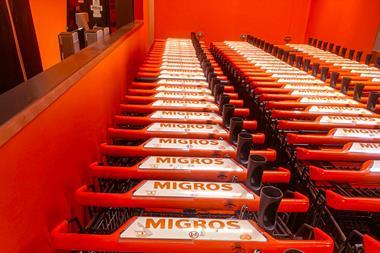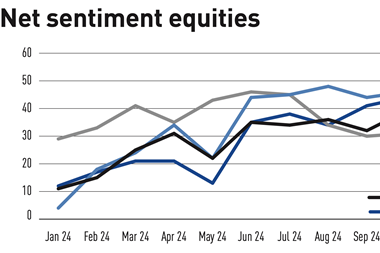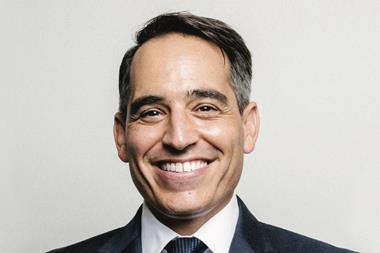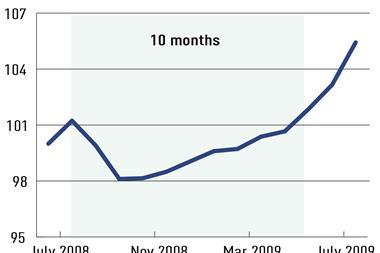In an absence of any interest from existing corporate pension plans or pension trusts, Norway’s life insurers have become the main protagonists of the new tax favoured DC schemes.
The insurers already dominate the management of occupational DB plans in Norway.
Some NOK 300bn (E41bn) of pension fund assets are managed by insurance companies, compared with the NOK90bn to NOK100bn in pension trusts and municipalities.
Now they have made a determined bid for the segment of the market where there is greatest potential for growth - the medium and small companies that do not have a pension scheme, employing some 900,000 private sector employees. At the same time, they have targeted another new market for DC plans - the Norwegian municipalities whose schemes are now open to competition. The municipality market represents an estimated NOK 120bn in premium reserves.
Storebrand introduced a DC product in 1997. However, it was slow to get off the ground. Geier Holmgren, leader of the DC development team at Storebrand, explains: “Companies didn’t get any tax benefits at that time so we attracted only a few clients. Most companies were waiting for the new tax rules to come into force in 2001”.
Storebrand did not wait for the legislation. Between 1999 and 2000 it set up an IT project to develop the administration systems needed for DC contracts. It also designed the DC product itself. “During this process we visited all the markets to get input on what kind of DC products would be popular in Norway,” says Holmgren. “In particular, we talked to consultants and life assurance companies in the UK”.
Holmgren says the Storebrand team had a fair idea of what the specifications for a new DC plan would be. “Even though the tax rules weren’t ready, we knew a lot about how they would operate. So we were able to launch the product at the beginning of 2001 at the same time as the tax rules were announced.”
Storebrand now have between 280 and 290 companies as clients for their DC plans. Most of these – between 80% and 90% – are companies that did not have an existing occupational pension plan. On average these are small companies with 20 to 30 members per scheme. No particular type of industry, such as IT or ‘new economy’ companies, predominates.
Companies can switch to DC schemes in three ways. They can terminate the DB contract ad start all over again with a DC contract for all employees. Storebrand does not recommend this route, and there are few examples in the market.
The second way is closing down a DB scheme and splitting members into two different groups – those that will continue in the DB scheme and those that will go into the new DC plan.
The third way is topping up an existing DB scheme with a DC scheme. However, there are drawbacks to this option, says Holmgren. “There are limitations on how good or big the different schemes can be. It is not possible to have a very good DB scheme and also a very good DC scheme for tax benefits.”
Holmgren says most companies will choose the second method, allowing the existing member continue in the DB scheme but directing new members into the DC scheme.
Investment choice provides the real pull of a DC scheme. “That was one of the things we found from looking at the UK market. People wanted individual investment choices,” says Holmgren.
Storebrand has more than 30 funds, which are provided by Storebrand and eight other asset managers, including international players such as Invesco, Morgan Stanley and Merrill Lynch. The most popular fund is a global equity fund, which offers the benefits of an equity fund with a floor. If there is even a moderate increase in the global equities market the investor captures 70 to 80% of this growth. If there is a decrease the investor loses no more than 5%. Almost half of the total assets are invested in this fund.
Investment advice is largely a matter for the scheme provider, Holmgren says. “When we set up a DC scheme we have a start-up meeting for all the employees to explain how the scheme works. We also have a call centre that employees can use. We give advice based on the knowledge of the member, the age of the member and the views of the member on investment risk. We recommend all members to reduce the risk 10 years before they take their pension.”
One idea that has attracted attention is Storebrand’s “saving school”. Here employees are given basic information about the workings of the pension system. Although there is no written test, employers will insist that employees use the school before making any investment choice.
However, the market is the best teacher, Holmgren says. “We are quite comfortable with the fact that we have launched the product at a time when there are quite big fluctuations in the market. If we had launched it three years ago equity prices were going straight upwards, and investors would have learned nothing. The fluctuations will help us teach the investors that markets go down as well as up.”


















No comments yet